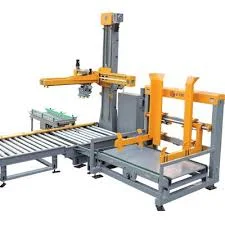Guide rail systems are crucial components in many industries, providing the necessary support and alignment for equipment and machinery. Whether you are in manufacturing, transportation, or any other sector, selecting the right guide rail system can significantly impact your operational efficiency, safety, and overall productivity. This blog will guide you through the key considerations for choosing the right guide rail system for your industry, helping you make an informed decision that meets your specific needs.
Understanding Guide Rails
Guide rails are essential for directing and stabilizing the movement of various machinery and equipment. They come in different types, including linear guides, rail systems, and more specialized configurations, each designed to handle specific loads, speeds, and environmental conditions. The choice of guide rail system depends on several factors, including the nature of your operations, the type of equipment, and the operating environment.
Key Considerations for Selecting a Guide Rail System
1. Determine the Load Capacity
One of the most critical factors to consider is the load capacity of the guide rail system. The system must be able to support the weight of the equipment and any additional loads it will encounter during operation. Overloading a guide rail system can lead to premature wear and potential failure. Evaluate the maximum load requirements and choose a guide rail system that can handle these loads with a sufficient safety margin.
2. Assess the Speed and Movement Requirements
Different guide rail systems are designed for varying speeds and types of movement. Some systems are optimized for high-speed operations, while others are better suited for slower, more controlled movements. Determine the speed and movement requirements of your machinery to ensure that the guide rail system you choose can accommodate these needs without compromising performance or safety.
3. Consider the Operating Environment
The operating environment plays a significant role in selecting the right guide rail system. Factors such as temperature, humidity, exposure to chemicals, and the presence of dust or debris can affect the performance and longevity of the guide rails. For example, in environments with high temperatures or corrosive substances, you may need guide rails made from specialized materials or with protective coatings. Ensure that the guide rail system you choose is suitable for your specific environmental conditions.
4. Evaluate Material and Construction
Guide rails are available in various materials, including steel, aluminum, and plastic. Each material offers different advantages in terms of strength, weight, and corrosion resistance. Steel guide rails, for instance, are known for their durability and load-bearing capacity, while aluminum rails are lighter and more resistant to corrosion. Select a material that aligns with your operational requirements and environmental conditions.
5. Examine the Design and Compatibility
The design of the guide rail system must be compatible with your existing equipment and machinery. Consider factors such as mounting options, alignment mechanisms, and integration with other components. Some guide rail systems come with adjustable features that allow for customization and fine-tuning. Ensure that the system you choose fits seamlessly with your equipment and provides the necessary support and alignment.
6. Safety Features and Compliance
Safety is a top priority when selecting a guide rail system. Look for features that enhance safety, such as integrated braking systems, collision sensors, and protective barriers. Additionally, ensure that the guide rail system complies with relevant industry standards and regulations. Compliance with safety standards not only protects your workforce but also helps avoid potential legal issues.
Special Considerations: Breather Valves
In some guide rail systems, especially those used in environments with fluctuating temperatures or pressure changes, the inclusion of breather valves can be important. Breather valves help manage pressure changes within the system, preventing issues such as contamination or vacuum formation. If your application involves such conditions, consider guide rail systems that incorporate breather valves to maintain optimal performance and extend the lifespan of the components.
Conclusion
Choosing the right guide rail system for your industry involves careful consideration of various factors, including load capacity, speed requirements, operating environment, material, design, and safety features. By evaluating these aspects thoroughly, you can select a guide rail system that enhances the efficiency, safety, and reliability of your operations.
Working with a knowledgeable supplier or consultant can also provide valuable insights and recommendations tailored to your specific needs. Whether you are upgrading existing systems or installing new ones, investing time and effort in selecting the right guide rail system will pay off in improved performance and long-term success.
For more specialized advice or to explore various guide rail options, consult with industry experts and reputable suppliers to ensure that you make the best choice for your unique requirements.
